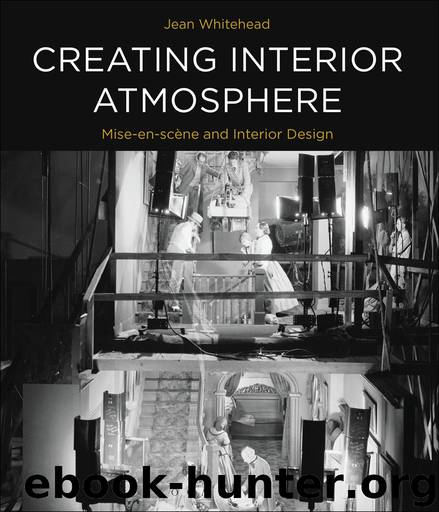Creating Interior Atmosphere by Jean Whitehead

Author:Jean Whitehead
Language: eng
Format: epub
ISBN: 9781474249690
Publisher: Bloomsbury
Published: 2017-03-14T04:00:00+00:00
Figure 5.4
Play House with Bang & Olufsen, Milan, Italy, 1999, by TRAAST + GRUSON (now credited to ProArtsDesign and Eword Traast).
Implied space – the design of this exhibition is formed by a minimal outline or silhouette, enhanced by sensory triggers, which leaves room for the imagination to interpret the story of this space.
Sensory space
Some would argue that the study of interiors is inherently a visual medium, one purely concerned with aesthetics and style. But this is to misunderstand the discipline and ignore the power of the lived sensory experience – of actually being in a space. The senses relate to the bodily faculties that recognize and process sensation through our sense of sight, sound, smell, touch and taste. All of our senses come to the fore when we are required to do more than just passively gaze at a space. By recognizing the sensory potential of an interior, certain senses can be prioritized, begging the question: how can an interior engage with our sense of smell or hearing? When a particular sense is exaggerated, this can change our perception of a given space, potentially skewing the whole experience. This requires a conscious shifting of position from what are generally regarded as the traditional elements of the decorated interior – paint, wallpaper and textiles – to more ephemeral or transitory ingredients, as will be illustrated by the following description.
Located in the Barbican, London, the extraordinary Rain Room by Random International harnessed interior atmosphere through a literal downpour, and played with the surreal contradictions of being in a torrential deluge of rain inside whilst not getting drenched. The senses are initially assaulted through the sound of pounding rain. However, the expected sensory experience of feeling the rain falling does not occur; it is as if you can dictate the weather. The artists used digital technology to create this effect via a series of three-dimensional tracking cameras that mapped the location of your body, turning the rain nozzles on and off as you progressed through the installation. This example illustrates how the manipulation of our senses can engender delight through unexpected juxtapositions that question stereotypical interior conventions.
Download
This site does not store any files on its server. We only index and link to content provided by other sites. Please contact the content providers to delete copyright contents if any and email us, we'll remove relevant links or contents immediately.
Kathy Andrews Collection by Kathy Andrews(11730)
The remains of the day by Kazuo Ishiguro(8821)
Paper Towns by Green John(5089)
Spare by Prince Harry The Duke of Sussex(5072)
Industrial Automation from Scratch: A hands-on guide to using sensors, actuators, PLCs, HMIs, and SCADA to automate industrial processes by Olushola Akande(4979)
The Body: A Guide for Occupants by Bill Bryson(4974)
Machine Learning at Scale with H2O by Gregory Keys | David Whiting(4179)
Be in a Treehouse by Pete Nelson(3947)
Never by Ken Follett(3790)
Harry Potter and the Goblet Of Fire by J.K. Rowling(3774)
Goodbye Paradise(3727)
Into Thin Air by Jon Krakauer(3312)
The Remains of the Day by Kazuo Ishiguro(3293)
The Cellar by Natasha Preston(3260)
The Genius of Japanese Carpentry by Azby Brown(3224)
Fairy Tale by Stephen King(3220)
120 Days of Sodom by Marquis de Sade(3180)
The Man Who Died Twice by Richard Osman(2997)
Drawing Shortcuts: Developing Quick Drawing Skills Using Today's Technology by Leggitt Jim(2996)
